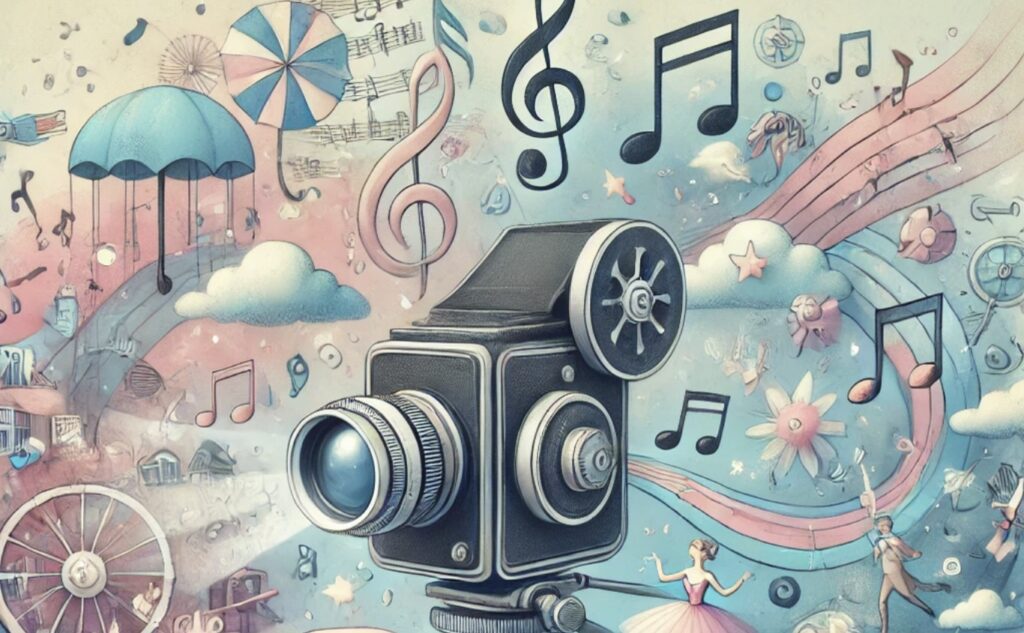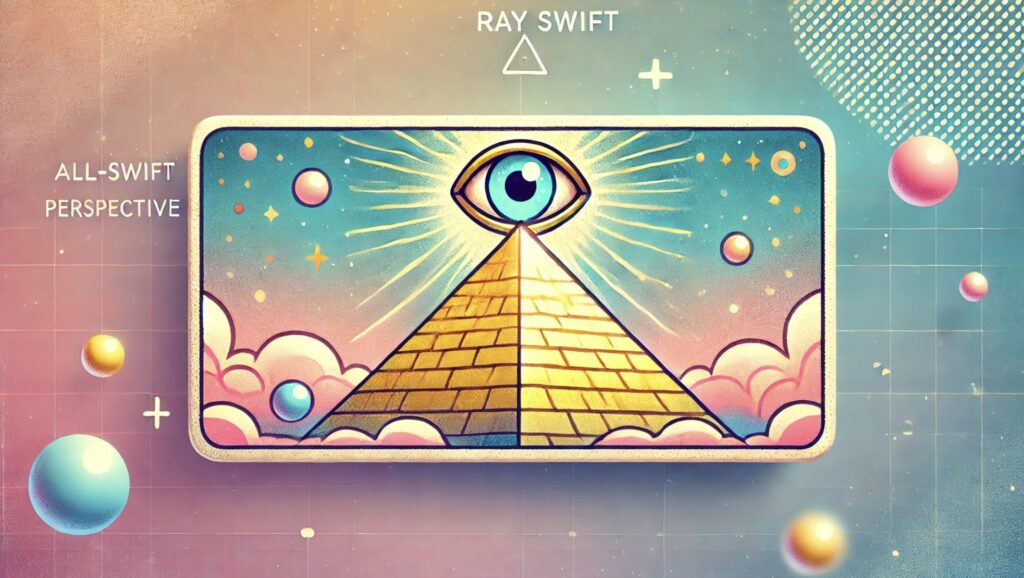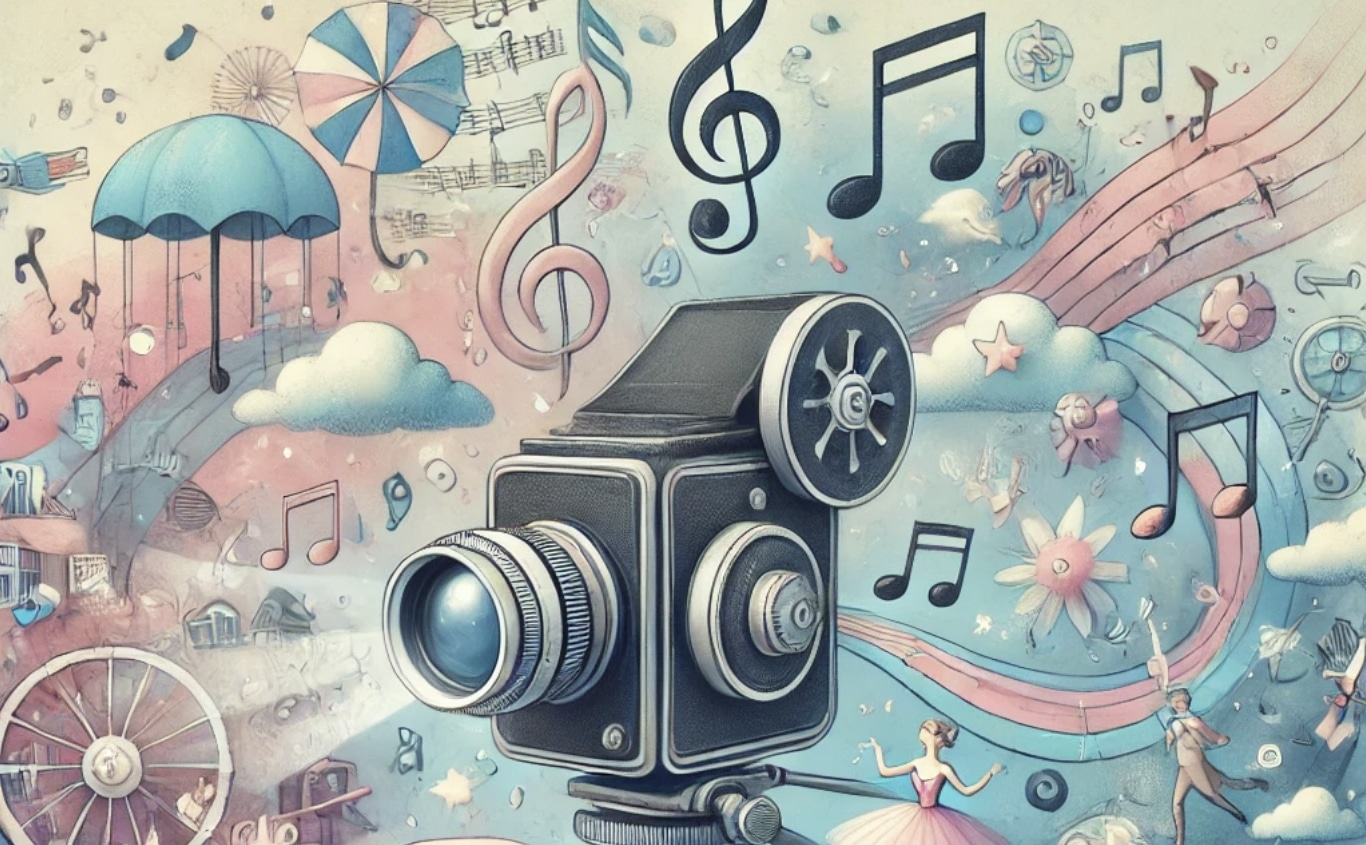Taylor Swift Music Videos: Go behind the scenes to learn the meaning of aesthetics, storytelling, and visual elements in Swift’s music videos
Taylor Swift creates chart-topping hits and visually stunning, innovative music videos. In this article, we dive into the creative process behind her iconic videos, exploring her journey, challenges, and unique transformations. Go behind the scenes to discover how Taylor Swift crafts her storytelling, and see her dedication firsthand as she strives for perfection in every moment.

The Top 7 Most Iconic Taylor Swift Music Videos
Blank Space
“Blank Space” blends opulence and satire, presenting a satirical take on the media’s portrayal of Taylor Swift as a ‘crazy serial dater.’ The lyrics of “Blank Space” play into this persona, with lines like “Got a long list of ex-lovers / They’ll tell you I’m insane” and “Darling, I’m a nightmare dressed like a daydream.” The video brings these lyrics to life by showing Swift engaging in over-the-top, dramatic behaviors, such as destroying her boyfriend’s clothes and car.
The setting of a luxurious mansion further emphasizes themes of wealth and excess, connecting to lyrics like “Got a long list of ex-lovers / They’ll tell you I’m insane / But I’ve got a blank space, baby / And I’ll write your name,” suggesting a pattern of disposable relationships. The mansion serves as a visual representation of Swift’s extravagant lifestyle and the allure it holds for her suitors.
Motifs and symbols
The recurring motif of the ‘blank space’ is represented visually through various elements in the video, such as the empty portrait that Swift paints of her boyfriend and the pristine white horse she rides. These blank spaces symbolize the void Swift’s character seeks to fill with each new relationship—each new lover is an opportunity for her to write their name into her narrative.
The apple that Swift offers to her boyfriend symbolizes temptation and the forbidden, alluding to the biblical story of Adam and Eve. This ties into the lyrics “Boys only want love if it’s torture.” The apple representing the dangerous and destructive nature of the relationship. The ending of the video shows the heartbroken boyfriend driving away and immediately replaced by a new suitor. This further emphasizes the cyclical nature of Swift’s character’s relationships. This aligns with the song’s central theme of a woman who thrives on the drama and intensity of love, even if it ultimately leads to heartbreak.
Bad Blood
“Bad Blood” centers on themes of female empowerment and solidarity, showcasing strength through the portrayal of women and their relationships. With a large cast of powerful women, the video highlights their training together and the support they provide each other. Many viewers describe the concept as ‘girl empowerment,’ emphasizing the portrayal of numerous ‘badass’ women. One Reddit commenter even suggested that the video conveys the message: ‘My friends will build me back up when someone tries to take me out.’
These women embody both physical and mental strength, shown through the use of weapons, combat skills, and espionage activities. Each character has a distinctive name reflecting her toughness, like ‘Knockout,’ ‘Cut Throat,’ ‘Mother Chucker,’ and ‘Slay-Z.’
Girl Power
Beyond showcasing individual power, “Bad Blood” also emphasizes teamwork and camaraderie. The women unite for a common goal, relying on each other for support. The climactic scene depicts them standing in formation, ready for battle, visually reinforcing their solidarity. As the artist and lead character, Taylor Swift acts as a mentor, training her allies to become spies.
While celebrating female power and unity, the video doesn’t shy away from the complexities of female friendships. The central conflict between Swift’s character and the antagonist, played by Selena Gomez, adds depth and nuance. Casting Gomez, a close friend of Swift, as the villain who betrays her brings an ironic twist to the storyline. It acknowledges the potential for betrayal even in strong bonds, presenting a multifaceted portrayal of female relationships—one that balances strength and solidarity with the potential for conflict.
You Belong With Me
The music video for “You Belong With Me” centers around a classic love triangle. A ‘nerdy’ girl, played by Taylor Swift, is in love with her next-door neighbor. She is dating a popular, ‘mean’ cheerleader—also played by Swift. The video follows their interactions, ultimately ending with the boy realizing he belongs with the ‘nerdy’ girl. He chooses her over the cheerleader at prom. This storyline is reminiscent of many popular teen movies. It creates a familiar and relatable experience for viewers.
Swift’s dual roles allow for a visual representation of the ‘not like other girls’ trope. The video uses contrasting costumes, makeup, and hairstyles to visually distinguish between the two characters. The ‘nerdy’ girl is styled in casual clothing, glasses, and simple hairstyles. The cheerleader wears tight-fitting outfits, heavy makeup, and perfectly styled hair. These visual cues play into common stereotypes and create a visual dichotomy between the two female characters.
The setting and props contribute to the high school theme. The video is set in locations commonly associated with high school life. These locations include bedrooms, a school bench, a football game, and a prom. These settings enhance the relatability of the video for the target audience, as they are familiar and nostalgic spaces for many viewers. The video also uses props like band uniforms, cheerleading outfits, and a pen-and-paper message exchange between characters. This further solidifyies the high school setting and the narrative’s focus on teen romance.
Camera Techniques
The use of shot types enhances the storytelling and visual appeal. The video employs a variety of camera techniques to emphasize specific moments and create visual interest. An establishing shot at the beginning sets the scene and introduces the neighboring houses of the main characters. Shot reverse shots during the bedroom window conversations highlight the separation and longing between the two. A panning shot and close-up during the prom scene focus on the boy’s reaction to Swift’s transformation. These techniques elevate the visual storytelling and emphasize key emotional beats within the narrative.
Lighting is used to highlight Swift and emphasize her as the star. In the prom scene, Swift is illuminated more brightly than the surrounding characters as she enters, drawing attention to her and signifying her importance within the narrative. This technique, along with the frequent close-ups of Swift throughout the video, underscores her role as both the protagonist and the artist being promoted.
In conclusion, the “You Belong With Me” music video skillfully combines a familiar love triangle narrative with visually engaging elements to create a captivating and relatable experience for viewers. The contrasting portrayal of Swift’s characters, strategic use of setting and props, and clever camerawork all contribute to the video’s lasting impact.
The Man
“The Man” marked a significant moment in Taylor Swift’s career, as it was the first time she directed a music video entirely on her own. The making of “The Man” involved a transformation that required Swift to embody the titular character—a man. To achieve this, Swift worked closely with Bill Corso, a makeup artist known for his transformative skills. The prosthetics and makeup process took five hours each morning, and Swift wore a muscle suit, among other elements, to complete the look. Corso had previously worked with Swift on the “Look What You Made Me Do” video, where he transformed her into a zombie.
In addition to the physical transformation, Swift collaborated with a movement coach to master how to move like a man, from walking with a certain posture to checking someone out and even adjusting her underwear—details that helped her fully embody male physicality. Swift also explored behaviors such as smoking a cigar, which she had never done before, and paid close attention to facial expressions and gestures to refine her performance.
Swift’s artistic process for “The Man” was highly collaborative, as she worked with makeup artists, movement coaches, and directors to bring her vision to life. She valued their feedback and used humor to highlight the double standards men and women face. The behind-the-scenes look at “The Man” shows her dedication to delivering an authentic performance that speaks to gender inequality, drawing from her own experiences and observations.
All Too Well: The Short Film
All Too Well features many aesthetic choices that help highlight Taylor Swift’s vulnerability. The age difference between Sadie Sink (19) and Dylan O’Brien (30) was a deliberate decision to mirror the age gap between Swift and Jake Gyllenhaal. This emphasizes the power imbalance she experienced. The film opens with a quote from Pablo Neruda: ‘Love is so short, forgetting is so long.’ Swift used this to set a bittersweet tone for the story. The opening shot, features the couple lying in bed in soft morning light. It establishes intimacy while using a 4:3 aspect ratio and 35mm film to evoke nostalgia.
The first kiss between the characters is filmed with a 360-degree spinning camera, often called an “orbital kiss.” It conveys both intense joy and an unsettling undertone due to the age gap. The kitchen argument marks a turning point. The lighting shifts from warm to harsh blues to signal the decline of their relationship. Sink’s breakdown scene powerfully conveys vulnerability. It employs aerial shots to emphasize her isolation in contrast to earlier scenes of connection. The closing scene replaces Sink with Swift as the older version of the character. O’Brien’s character is watching her through a window, emphasizing the emotional distance that now separates them.
Recurring motifs throughout the film also contribute to its thematic depth. The color red is used prominently. It symbolizes the intensity of love and heartbreak. Sadie Sink’s red hair and the red scarf, which symbolizes innocence and serves as a reminder of the past relationship, are central visual elements. The film frequently focuses on the characters’ hands, emphasizing touch as a love language and highlighting both power dynamics and vulnerability. These artistic choices reflect Swift’s deep commitment to storytelling through powerful visuals.
Out of the Woods
“Out of the Woods” showcases Taylor Swift’s willingness to endure challenging conditions to bring her artistic vision to life. Joseph Kahn directed the video across various locations, including a real forest, a beach, and a soundstage in New Zealand. Swift’s dedication is evident, as she even wore a dress while filming in the snow to achieve the desired visuals. According to Kahn, Swift ‘suffered for her art,’ but her commitment never wavered.
The behind-the-scenes footage also highlights Swift’s appreciation for the work of skilled set designers. She praised their efforts in creating elaborate, realistic sets, which played a crucial role in capturing the video’s mystical and immersive atmosphere. The production relied on special effects, described as a ‘mystical, effects-heavy journey,’ adding to the dreamlike quality of the visuals.
Swift’s creative process for “Out of the Woods” was ambitious and collaborative. She worked closely with talented individuals, such as set designers and visual effects artists, to bring her vision to life. These elements reflect Swift’s dedication to pushing creative boundaries, embracing both the physical demands of filming and the technical challenges of special effects to tell an emotional story.
Lavender Haze
“Lavender Haze” creates a dreamy, romantic atmosphere with a rich visual narrative for fans. Behind the scenes, Taylor Swift interacted directly with the actors on set, explaining the themes and special effects central to the video. For instance, she described the meaning of the scene to Laith Ashley, who played her love interest, where she lies on the floor wearing a fur coat. Swift also explained how the special effects would work, such as the galaxy appearing on Laith’s back as she brushes her hand over it.
The video’s set design includes an elaborate “dream room” filled with flowers that grow and overtake the room with strings under the floor. The crew celebrated the artists who made the intricate designs. In another notable scene, Swift crawled through the flower-filled room, removing her jacket for better movement. The video also included a “powder party” effect, where powder exploded on set. Swift felt excited about the visuals and enthusiastically commented on how much powder they had on hand. The making of “Lavender Haze” perfectly demonstrates Taylor Swift’s dedication to creating a visual and emotional impact for her audience.
Innovations in Taylor Swift’s Music Videos
Taylor Swift’s video production has often led to innovations in music video techniques. From the groundbreaking visual effects used in “Bad Blood” to the gender transformation seen in “The Man,” Swift’s visual storytelling engages fans with high production values and compelling narratives. Taylor Swift’s on-set moments also show her dedication to creating authentic connections with her audience through visuals that enhance the emotional depth of her music.

Ray Swift’s Perspective: The Evolution of Taylor Swift’s Visual Artistry
In my opinion, Taylor Swift’s music videos tell stories far beyond the lyrics. What stands out the most about her creative process is her willingness to take risks. Whether transforming into a man for “The Man” or satirizing her own media image in “Blank Space,” she never hesitates to experiment and evolve.
Taylor Swift’s commitment to artistry goes beyond music—it extends deeply into her visual storytelling. She connects to universal emotions while giving each video her unique touch, resonating with millions of fans. Her dedication shines through in every frame, and the on-set moments reveal an artist unafraid to break new ground.
I also sense that Swift weaves in esoteric knowledge, blending spiritual and metaphysical concepts into her art. This adds layers of depth and complexity to her work, showing that she’s always thinking and evolving.
Swiftie Thoughts
To bring in the Swiftie community, I reached out to one of our fellow Swifties on Instagram. @swiftieposters shared, “Taylor puts a lot of thought into all her music videos, and I love finding the Easter eggs and clowning!” At SwiftVerse, we completely agree! That’s why we’re turning this article into an Easter Egg hunt.
Have you found any Easter Eggs in the videos mentioned above? Drop a comment with the timestamp or a screenshot so we can discuss all the hidden gems together! Your insights make this community stronger, and we can’t wait to hear your thoughts.
Leave your thoughts below, Swifties! What’s your favorite Taylor Swift video, and what does it mean to you? Let’s keep building this community, one Easter Egg at a time!
Leave your thoughts in the comments, Swifties! What is your favorite Taylor Swift Video and what does it mean to you?
Head back to news for more stories and articles for more deep dives
Ray Swift ❤️🐈🌚

